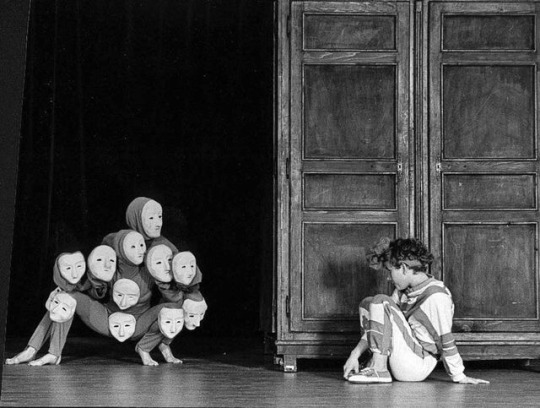Photo




DeepTingle
I’m temped to just leave this without comment. But there’s a serious point here too:
There’s no denying that many of these systems can provide
real benefits to us, such as faster text entry, useful suggestion
for new music to listen to, or the correct spelling for
Massachusetts. However, they can also constrain us. Many
of us have experienced trying to write an uncommon word,
a neologism, or a profanity on a mobile device just to have it
“corrected” to a more common or acceptable word. Word’s
grammar-checker will underline in aggressive red grammatical
constructions that are used by Nobel prize-winning authors
and are completely readable if you actually read the
text instead of just scanning it. These algorithms are all too
happy to shave off any text that offers the reader resistance
and unpredictability. And the suggestions for new books
to buy you get from Amazon are rarely the truly left-field
ones—the basic principle of a recommender system is to
recommend things that many others also liked.
What we experience is an algorithmic enforcement of
norms. These norms are derived from the (usually massive)
datasets the algorithms are trained on. In order to ensure
that the data sets do not encode biases, “neutral” datasets
are used, such as dictionaries and Wikipedia. (Some creativity
support tools, such as Sentient Sketchbook (Liapis,
Yannakakis, and Togelius 2013), are not explicitly based on
training on massive datasets, but the constraints and evaluation
functions they encode are chosen so as to agree with
“standard” content artifacts.) However, all datasets and
models embody biases and norms. In the case of everyday
predictive text systems, recommender systems and so on, the
model embodies the biases and norms of the majority.
It is not always easy to see biases and norms when they are
taken for granted and pervade your reality. Fortunately, for
many of the computational assistance tools based on massive
datasets there is a way to drastically highlight or foreground
the biases in the dataset, namely to train the models on a
completely different dataset. In this paper we explore the
role of biases inherent in training data in predictive text algorithms
through creating a system trained not on “neutral”
text but on the works of Chuck Tingle.
In a world where recommender systems try to sell us things we already own and AI projects are trying to revive phrenology and sell it to police departments, it is worth remembering that no dataset is truly neutral.
http://www.deeptingle.net/index.html
189 notes
·
View notes
Photo

90s Warhammer “Realm of Chaos - The Lost and the Damned“ artwork by Les Edwards
157 notes
·
View notes
Photo









the remote, secluded and little known rice terraces of yuanyang county in china’s yunnan province were built by the hani people along the contours of ailao mountain range five hundred years ago. during the early spring season, the terraces, once planted, are irrigated with spring water from the forest above, reflecting sunlight to create these stain glass like landscapes
photos by jialiang gao, hai thinh, javarman, isabelle chauvel, chaluntorn preeyasombat and thierry bornier
130K notes
·
View notes
Photo




Light Field Video Capture Using a Learning-Based Hybrid Imaging System
Computational Photography research from UC Berkeley and UC San Diego have developed system of capturing Light Field video allowing editing of depth, position and focus:
youtube
Light field cameras have many advantages over traditional cameras, as they allow the user to change various camera settings after capture. However, capturing light fields requires a huge bandwidth to record the data: a modern light field camera can only take three images per second. This prevents current consumer light field cameras from capturing light field videos. Temporal interpolation at such extreme scale (10x, from 3 fps to 30 fps) is infeasible as too much information will be entirely missing between adjacent frames. Instead, we develop a hybrid imaging system, adding another standard video camera to capture the temporal information. Given a 3 fps light field sequence and a standard 30 fps 2D video, our system can then generate a full light field video at 30 fps. We adopt a learning-based approach, which can be decomposed into two steps: spatio-temporal flow estimation and appearance estimation. The flow estimation propagates the angular information from the light field sequence to the 2D video, so we can warp input images to the target view. The appearance estimation then combines these warped images to output the final pixels. The whole process is trained end-to-end using convolutional neural networks. Experimental results demonstrate that our algorithm outperforms current video interpolation methods, enabling consumer light field videography, and making applications such as refocusing and parallax view generation achievable on videos for the first time.
More Here
144 notes
·
View notes
Photo




BriefCam Video Synopsis - transforms surveillance data into composite, timestamped summary videos. Seeing through time. [Original Video]
388 notes
·
View notes
Photo


Arctostaphylos bark curls (by flora-file)
1K notes
·
View notes
Photo

HEY THIS IS THE THIRD FLOOR OF THE BUILDING I WORK IN AND THERES A HORSE HERE
331K notes
·
View notes
Photo

holgerlippmann 3688_radial_division
#codeArt #Processing #generative #minimal #HolgerLippmann #algorithmic #generativeart #genart #creativecoding #abstract #pixelsorting #glitch #procedural #mathart #landscape #iteration #circulation
https://www.instagram.com/p/BTlaBnxFCDw/?taken-by=holgerlippmann
Posted with Post to Tumblr
103 notes
·
View notes
Text
(a bell rings, reminding me of previous times i have eaten) these memories are so good… might as well salivate. it’s my choice.
100K notes
·
View notes
Photo








a jester cat character design I’ve been concepting lately! decided to stick these in a photoset so it’s not spamming up the feed.
2K notes
·
View notes
Photo


Théâtre du Mouvement – Catherine et l'armoire, 1985
18K notes
·
View notes

















